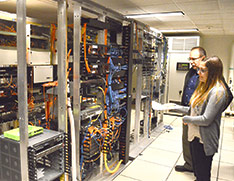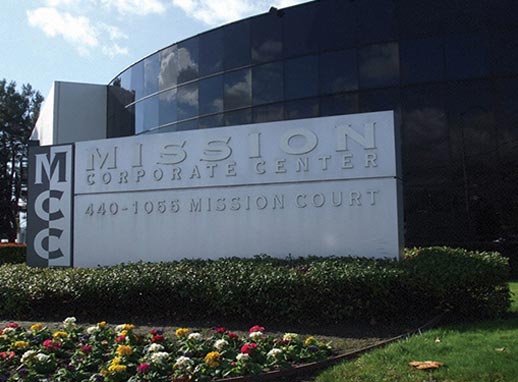Leasing Programs
Preserve Capital, Increase Financial Flexibilities and Maintain Your Competitive Edge through IRON Global Unique Hardware, Services and Software Technology Life Cycle Leasing Solution.

In today’s competitive business climate, companies are faced with investing in state-of-the-art equipment to maintain a high level of customer satisfaction while reducing operating costs and improving profitability. To address this challenge and assist you in maintaining a competitive advantage, Iron Equipment Leasing offers lease financing solutions tailored to your specific needs. As a result, you are able to acquire the leading edge equipment you need now and upgrade as your business requirements change. With Iron Equipment Leasing, you receive complete lifecycle support from acquisition through disposal including flexible mid-term upgrade solutions and lease-end asset.
When leasing from Iron, you can expect very competitive lease rates, a quick response and minimal lease paperwork, making the process simple and straightforward. In addition Iron offers following leasing advantages:
- Inclusion of hardware, software, training, support, maintenance, and other soft costs into one lease rate, resulting in one easy payment
- Competitive 12, 24, 36 and 48-month lease rate, lower upfront costs with 100% financing with Dollar buy-out option at the end of the lease.
- A disciplined approach to technology refresh. Add on or upgrade to match system capacity and functionality to changing requirements
- A match between financial lifecycles to your technology’s useful life. Avoid higher late-life maintenance costs and benefit from increased reliability and accuracy by upgrading to new systems earlier
- Preserve credit lines, conserve working capital and cash reserves.
Leasing vs Buying Tips
What you will learn from this tip
To help you decide between leasing and buying storage, this tip looks at the pros and cons of each approach along with some situational considerations.
The fundamental difference between purchasing and leasing server and storage is that with a purchase, you pay or finance the acquisition in exchange for ownership and equity of the asset. On the other hand, a lease or rental involves periodic payment by a lessee to a lessor in exchange for use of an asset, with the lessor retaining ownership and equity of the asset.
Leasing and financing situations share some common benefits including shifting or deferring costs over a period time for lower monthly payments to ease cash flow. At times, a lease may not be cheaper from a total cost of ownership (TCO) perspective, and you would need to do a financial lease vs. buy analysis. Traditionally, leases have been sold as a means to afford expensive items, maximize cash flow, insulate yourself from technology obsolesce and relieve yourself of the burden of technology disposal. Even though cost per gigahertz of computing and gigabyte of storage continues to fall, leasing has been touted as a way to cope with a flat budget to meet increasing IT server and storage demands. Leases are an alternative to using cash or bank credit lines to maintain or improve financial stability of your business. There can be different financial and tax benefits or caveats for leases, so you should seek professional advice (tax, accounting, insurance and/or legal) for your situation.
A lease vs. purchase (or finance) decision hinges in part on your financial situation and business requirements. Other factors include personal and organization preferences, current market opportunities and economic conditions. How long you will be able to (and plan on) effectively using an asset also plays into the decision. Generally speaking, the longer you plan on using an item, the more sense it may make to make a purchase (outright or via financing). With a purchase, you own the asset and the equity in it; however, you also have a larger cash outlay or finance fees. An outright purchase can also put a strain on your cash flow and balance sheet. Situations and conditions change from an economic and technology standpoint over time, so it makes sense to revisit lease vs. purchase decisions periodically.
Fair market value (FMV) leases can be a good option if you plan on replacing your technology in three years or less and may have tax benefits depending on your business' location. A FMV lease generally involves returning the asset to the lessor at the end of the lease term or purchasing the item at fair market value. Another option is a dollar purchase for technology that you wish to keep for a long period of time with ownership transferring to you -- the lessee -- at the end of the lease term. A FMV would have a lower monthly premium than a dollar purchase option scenario.
Iron's unique partnership with leasing firms provide unique hardware and software technology lifecycle solutions and leasing programs. Some general things to consider when making a lease vs. purchase decision include:
- What are the current market finance (interest) rates?
- Do you have cash reserve and cash flow to support a purchase?
- How long will you be using or have a need for the technology?
- Can the service life of the technology be extended in a cost-effective manor?
- How much software and or services can be included in a lease agreement?
- What are the federal and state regulations pertaining to asset disposal?
To summarize, you should look at a lease vs. buy decision from a technology and business (finance, tax, insurance, etc.) perspective and balance the pros and cons to meet your particular needs. Revisit your purchase vs. lease polices from time to time to see if current economic, business, technology and other influences warrant a shift in your purchase vs. lease decisions.


